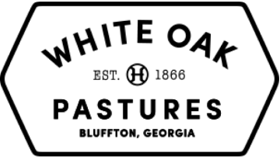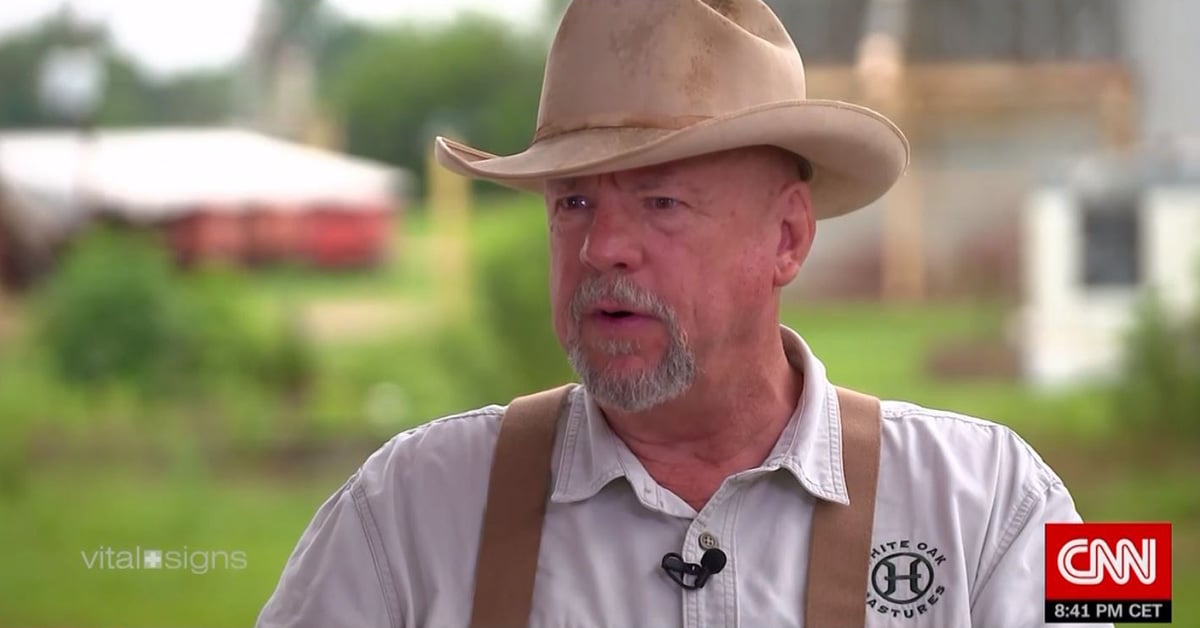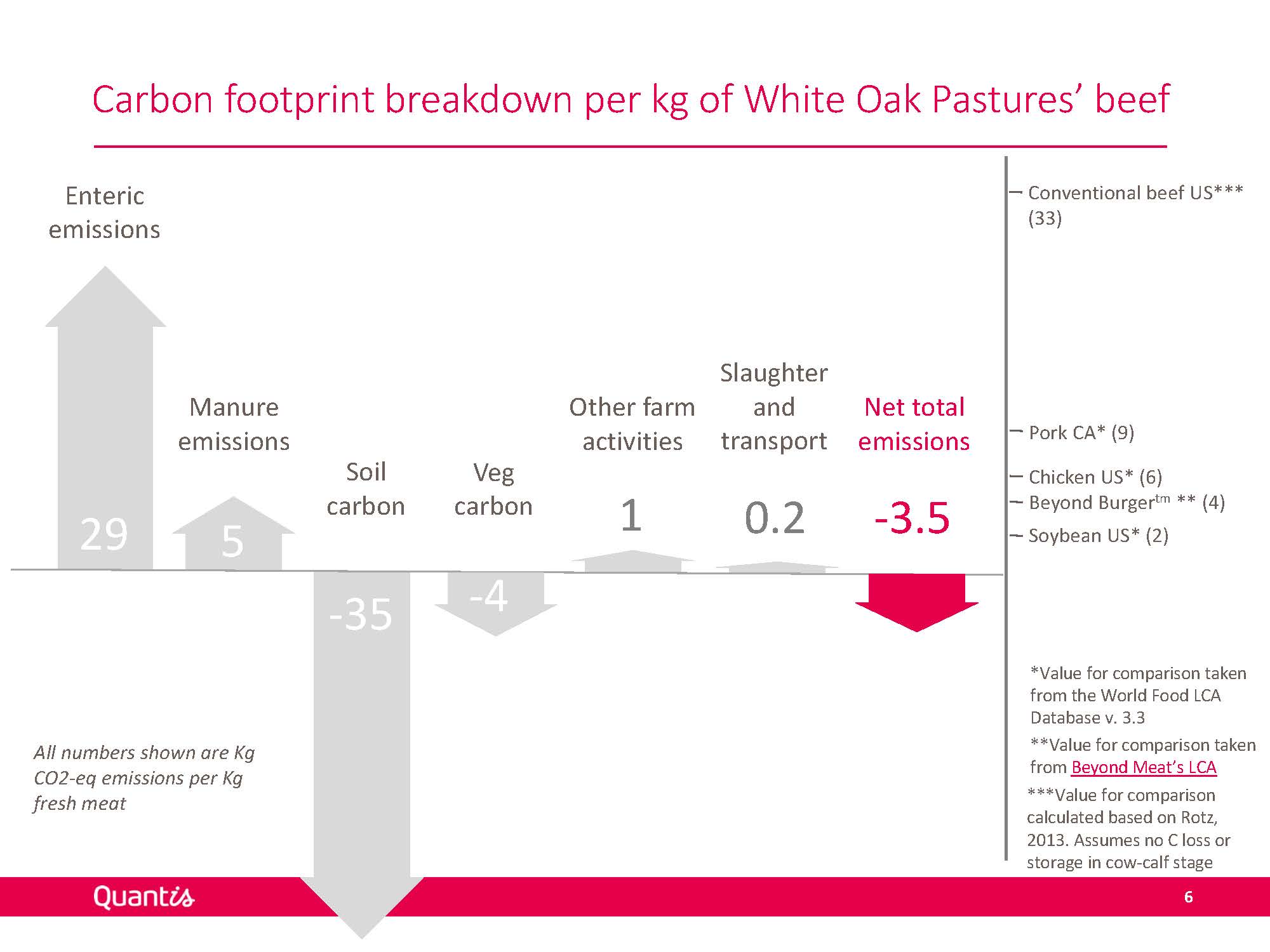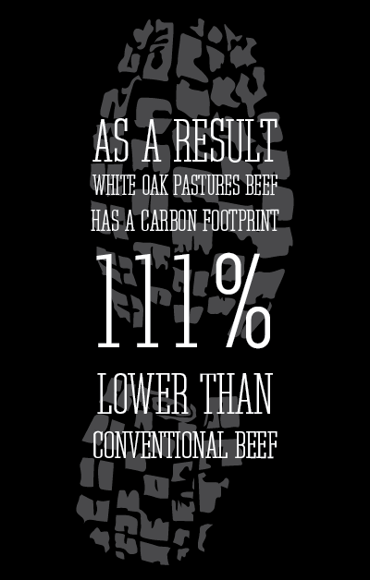White Oak Pastures has been a leader in illuminating the role meat production plays in climate change for years. But recently, we've been hearing that industrialized agriculture products made in a lab are the going to be future of meat. Fake meat companies like to say that they are a better choice for the environment, but at White Oak Pastures, we've been busy fact-checking their impossible claims. Most recently, on an episode of CNN Vital Signs with Dr. Sanjay Gupta, Will Harris destroyed the myth that they are benefiting future generations, pointing out that the trendy plant-based proteins are contributing to climate change while our grassfed cattle help reverse it.
WATCH VIDEO CLIP - THE FUTURE OF MEAT
Will thinks the focus should be on addressing the environmental cost of industrial farming, not turning plants into meat. He says, "It's not The Cow, it's The How."
Is Beef Good Or Bad For The Environment?
"He makes a clear distinction about how he runs his operation and the kind of mass meat production that's been found to damage the environment," according to Dr. Sanjay Gupta, Chief Medical Correspondent for CNN.
"Beef" includes a wide range of farming practices. White Oak Pastures grassfed beef does not share the stigma of extremely high greenhouse gas emissions attached to conventional beef. Most of the debate has been about measuring the environmental impact of massive feedlot cattle operations. However there are disagreements within the cattle industry itself, as explored in NPR's article, Is Grass-Fed Beef Really Better For The Planet? Here's The Science:
- Conventional cattle are "finished" in industrial feedlots for about 120 days, unnaturally gaining weight very quickly on a diet of commodity corn and other grains
- Older studies claimed that these feedlot-finished cattle had a smaller greenhouse gas footprint, because grassfed cattle gain weight slower and live longer, producing more methane
- These claims were based on Life-Cycle Assessments (studies that measure resource and energy use across a farming system) that claimed high energy feed and smaller land footprint cut greenhouse gas emissions
- The argument went like this: the larger the animal and the shorter its life, the lower its footprint
At White Oak Pastures, we never believed that this simple input-output approach told the full story of the complex interactions between soil microbes, photosynthesis, plant roots, and grazing animals that allow carbon to be absorbed and stored in healthy soil. Which is why we were happy to participate in a Life Cycle Assessment study at White Oak Pastures designed to take factors like soil health and carbon sequestration into consideration.
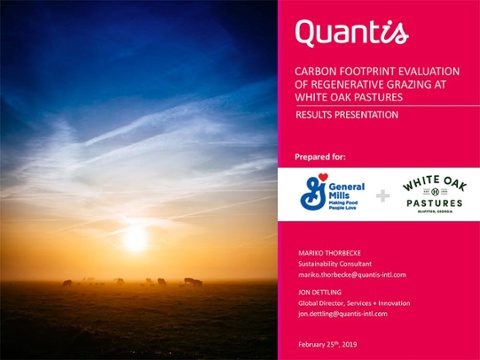 Download the full White Oak Pastures LCA report here
Download the full White Oak Pastures LCA report here
The LCA was conducted by the same environmental science firm that determined Impossible Foods and Beyond Meats industrially-farmed soy and pea protein-based products were net carbon emitters. In stark contrast, they found that White Oak Pastures integrated system is 6 times more carbon efficient than North American average production systems.
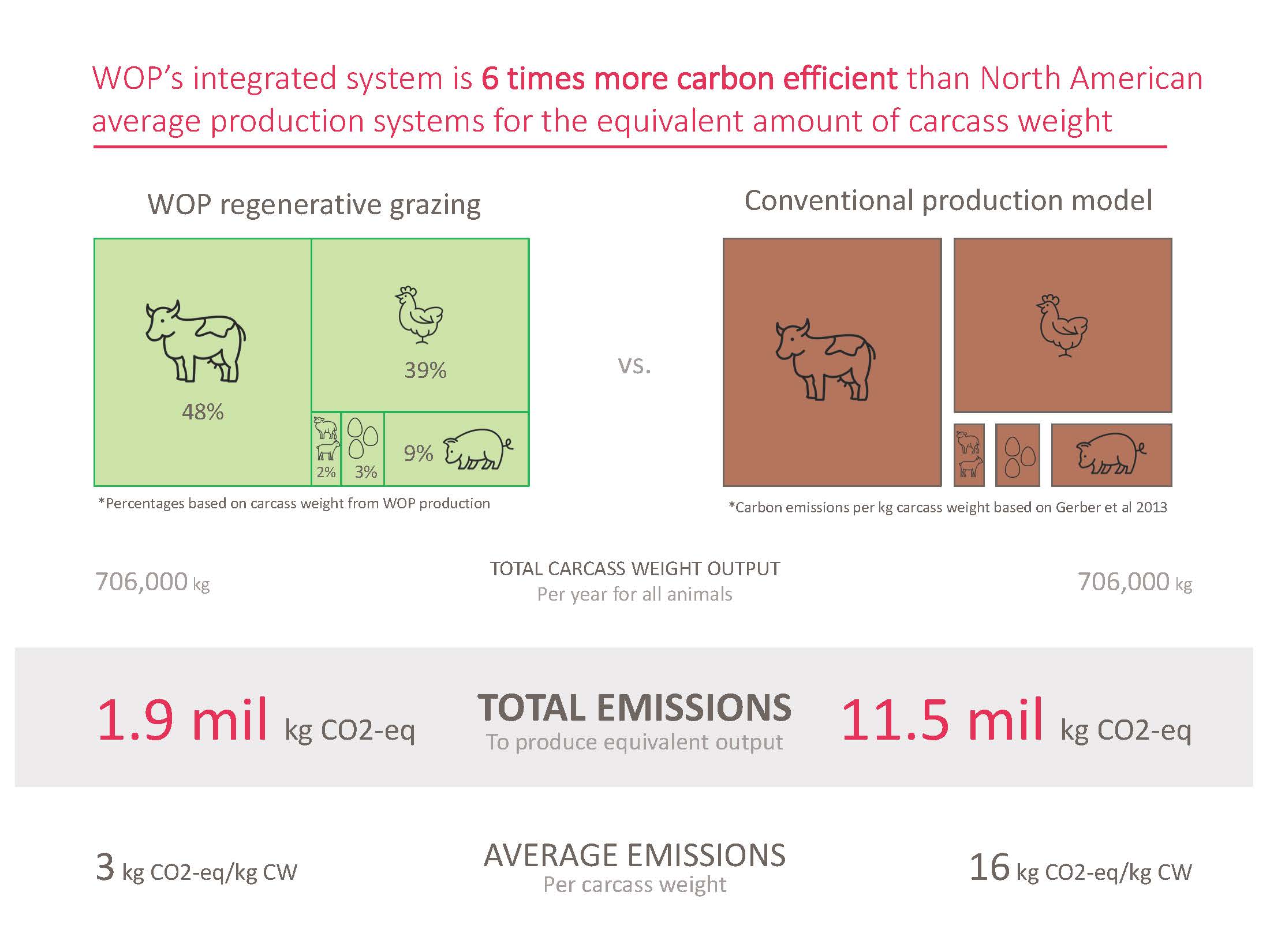
This also translates to at least 3.5 pounds of carbon being stored in our soil for every pound of White Oak Pastures beef you purchase. Impossible Foods' Life Cycle Assessment shows how industrial farming of GMO-soy or peas for their meat substitute releases at least 3.5 lbs of carbon dioxide equivalent for every pound of fake meat that is consumed.
"The irony is you'd have to eat almost exactly one pound of our grassfed beef to offset the carbon emitted from eating a pound of their stuff made from commodity crops," said Will Harris.
Our 3,200-acre farm stores enough carbon in the soil to offset all the methane emissions from our grassfed cattle, and most of the farm's total emissions. While it is true that our cattle live for longer, producing more methane over their lifetimes, they are grazing on holistically-managed pasture that not only offsets their impact, it stores additional carbon. That means that with our holistic land management practices, we are producing carbon-negative beef.
What Are Other Benefits Of Regenerative Grazing?
The White Oak Pastures LCA supports our belief that grazing ruminant populations are essential for a healthy ecosystem. The Savory Institute, a leader in the field of regenerative agriculture, lists multiple benefits of keeping cattle on pasture for their entire lives:
- restores soil microbial diversity
- makes the land more resilient to flooding and drought
- boosts the nutrient content and flavor of livestock and plants
- grasses trap atmospheric carbon dioxide to help fight climate change
- reduces water use by avoiding the need to irrigate cropland
- reduces fertilizer runoff polluting waterways
- reduces the concentration of manure from confined feeding operations
- reduces pesticide use on conventional cropland
- increased natural habitat
As Shauna Sadowski, head of sustainability for the natural and organic operating unit at General Mills, puts it, "Our current model is an extractive one that has left our environment in a state of degradation — eroded soil, polluted water. We have to change the entire paradigm to use natural ecological processes to gather nutrients and build the soil."
Why Grassfed Beef Is Better For The Environment Than Plant-Based Protein
Managed grazing by ruminants changes the paradigm from Plants vs. Meat to Industrial vs. Regenerative. Our grassfed cattle are not extractive, not simply the choice of "less harm" like a burger made of soy or peas. They are regenerating the land, sequestering carbon, and benefiting biodiversity while creating hundreds of good-paying jobs that have brought one of America's forgotten rural communities back from the brink of economic collapse.
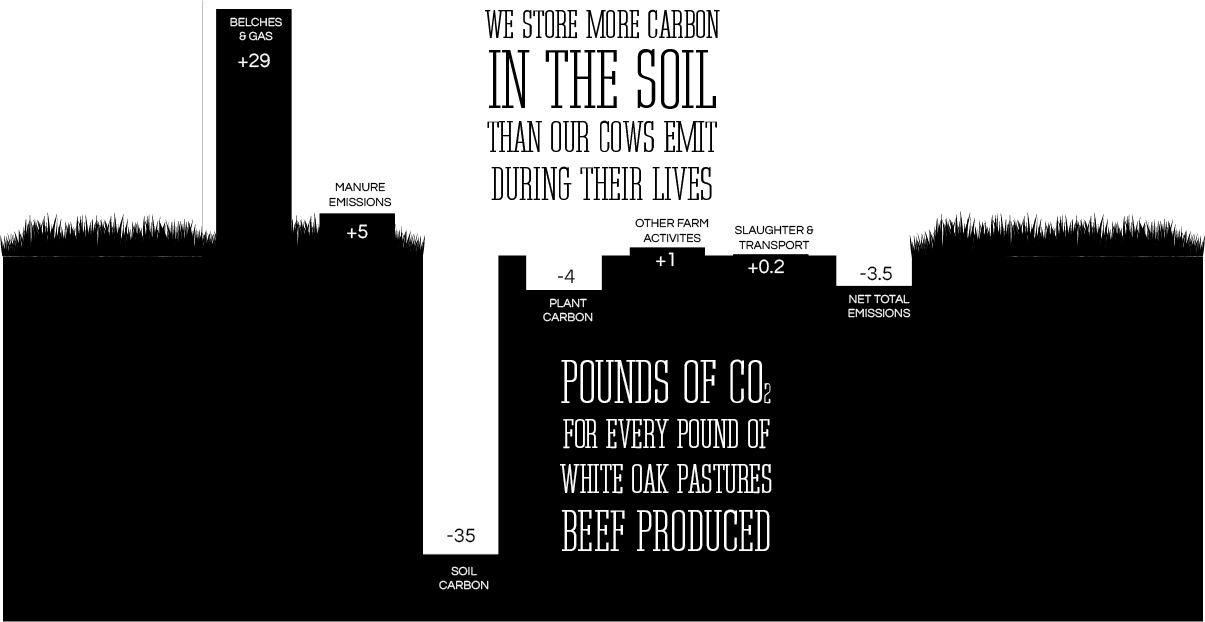
"Domestic livestock, like those raised at White Oak Pastures, managed to mimic Nature, provide society with crucial benefits: wholesome, nutrient-dense food; restored vibrant landscapes and communities; and a hopeful solution to climate change," says Daniela Ibarra-Howell, Chief Executive Officer of Savory Institute. "This is something that industrially produced fake meats can never provide."
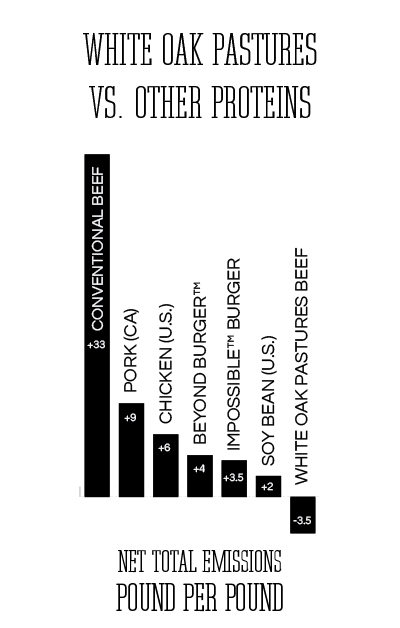
Which Tastes Better, Grassfed Beef or Plant-Based Burgers?
As for plant-based, fake meat calling itself "burgers"? Will has a quick response to that on Vital Signs, dismissing the imitation "as a sincere form of flattery". And let us be clear - it is only an imitation. We recently put grassfed beef burgers and plant-based burgers head-to-head in a taste challenge - who do you think won?
